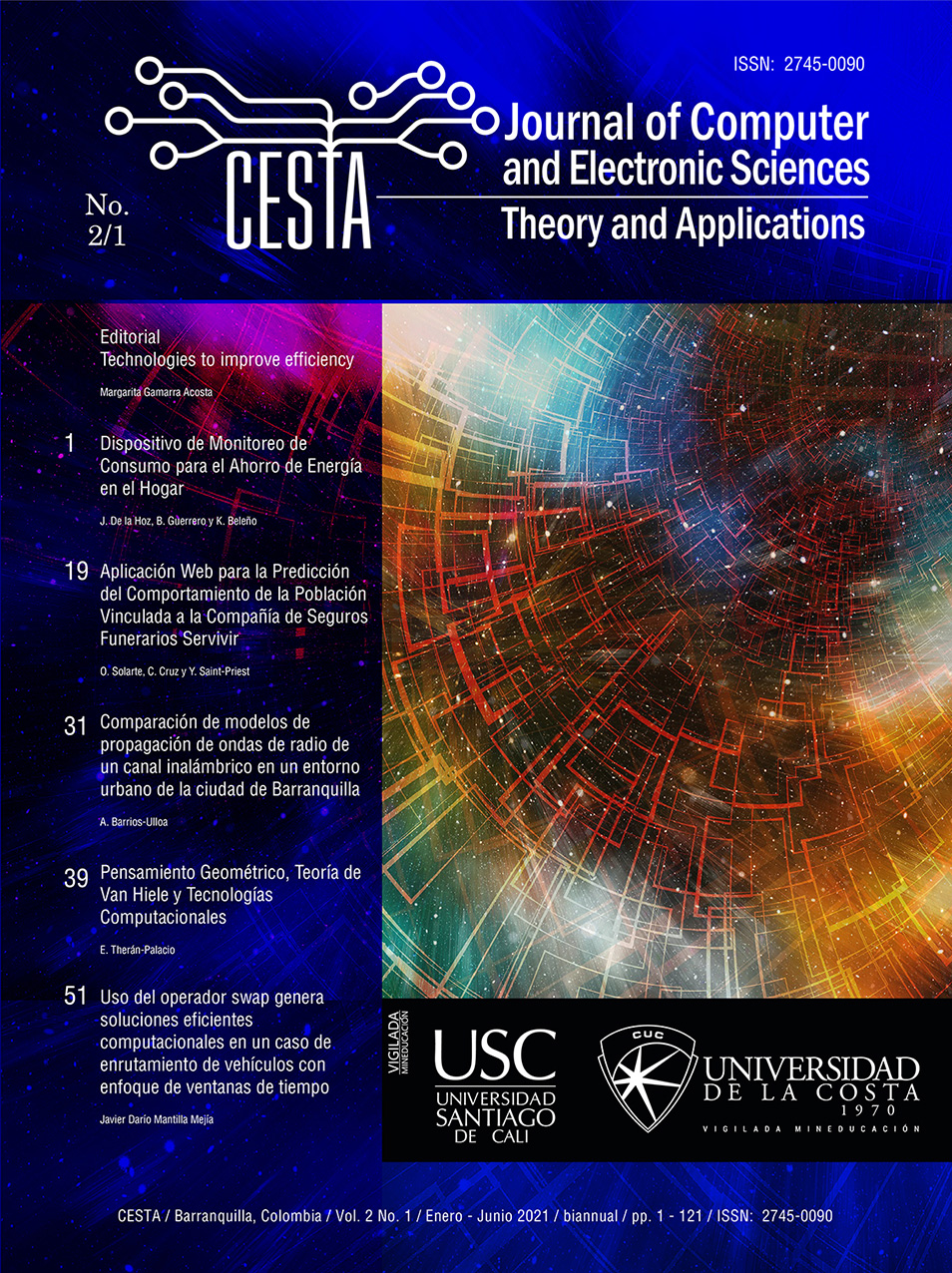Geometric Thinking, Van Hiele Model and Computational Technologies
DOI:
https://doi.org/10.17981/cesta.02.01.2021.04Keywords:
Quasi-experimental design; Didactic strategy; Van Hiele model; Geometric Thinking; Cabri Software.Abstract
Introduction: This article shows the results of the research "Didactic strategies to enhance geometric thinking by applying computational technologies and the Van Hiele model", which was developed in an Educational Institution of the official sector of the municipality of Corozal - Sucre, Colombia in the year 2016, the result of the author's degree work within the framework of the Master's Degree in Education at SUE Caribe, Montería Headquarters.
Objective: This research aimed to determine the incidence of the use of didactic strategies in the development of geometric thinking of students, supported by Computational Technologies and the Van Hiele model.
Method: A quasi-experimental design was used, with quantitative methods to establish inferences about the performance of the students when performing the pretest and posttest validation of learning.
Results: An improvement in the levels of understanding of geometry in sixth grade students of an Educational Institution of the official sector of the municipality of Corozal, Sucre, Colombia can be noted through the intervention with didactic strategies that used Computational Technologies and the model of Van Hiele.
Conclusions: The use of technology became an element of relevant value, the students showed greater interest and evidenced a genuine participation and commitment to their learning. The Van Hiele model was validated as a tool to measure the progress that students had in learning quadrilaterals, moving from the visualization level to the informal deduction level.
Downloads
Published
How to Cite
Issue
Section
License
Los artículos publicados son de exclusiva responsabilidad de sus autores y no reflejan necesariamente las opiniones del comité editorial.
La Revista CESTA respeta los derechos morales de sus autores, los cuales ceden al comité editorial los derechos patrimoniales del material publicado. A su vez, los autores informan que el presente trabajo es inédito y no ha sido publicado anteriormente.
Todos los artículos están bajo una Licencia Creative Commons Atribución-NoComercial-SinDerivadas 4.0 Internacional.



 English
English
 Español (España)
Español (España)






